The Multilocalist
Pawas Bajaj
The Multilocalist tells the story of a contemporary nomad finding their sense of home in flux. It displays different cities and places through immersive sound portals that emulate the emotional climate of each location. “Multilocalism” refers to the fact that in today’s global world, many people have no single place that they call home.
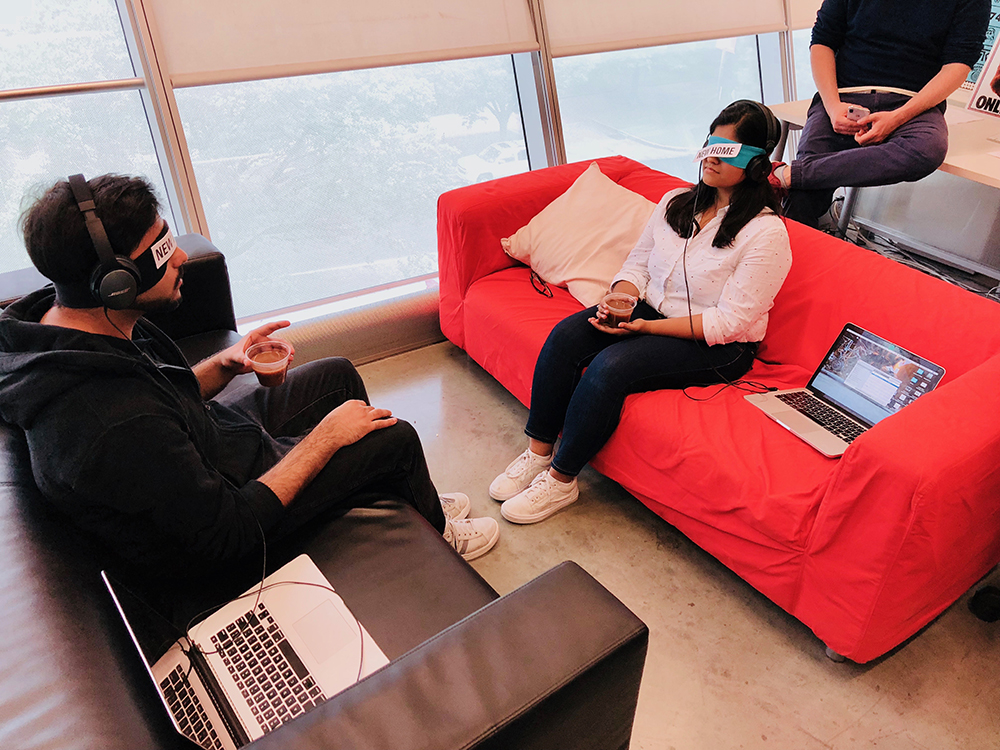
New Home performance
As part of a performance workshop hosted by The Rodina, two of my MICA classmates were able to experience a sense of home, while physically being thousands of miles away from that home. Through data collected by a series of interviews, I made individual soundscapes to reflect their immigration journeys. This experience triggered their memories of home, resulting in powerful feelings of nostalgia, sadness and joy in both the participants and the audience. This performance has been at the core of my project, and I have tried to translate this experiment onto myself.

Multilocalism Map
Emotional climate is how one feels in a place. It can be associated with the different aspects of home explored in this project like experiences, relationships, culture, identity, sounds, etc. Here is a cartogram of my multilocalities. It uses emoticons to explore the concept of emotional climate.

Unravel the Code
The Multilocalism Map was created as part of the class Unravel the Code during Fall 2018 at MICA. I used Arduino and processing to construct a step sensor. Stepping on the floor mat triggers different soundscapes and highlights the corresponding area on the map.
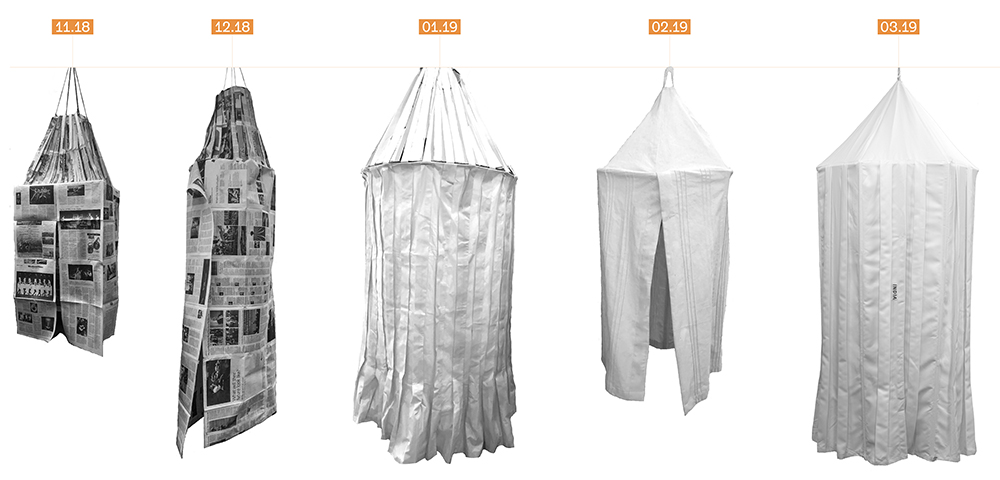
Tent progression
The form of the tent is inspired by the bedouin tents used by nomadic tribes all around the world. Portability was an essential aspect of designing the form of the tent. I experimented with different shapes of the frame like a circle, a square, and a polygon. I found out that a hexagonal structure is most portable, and fits in the knapsack most efficiently.
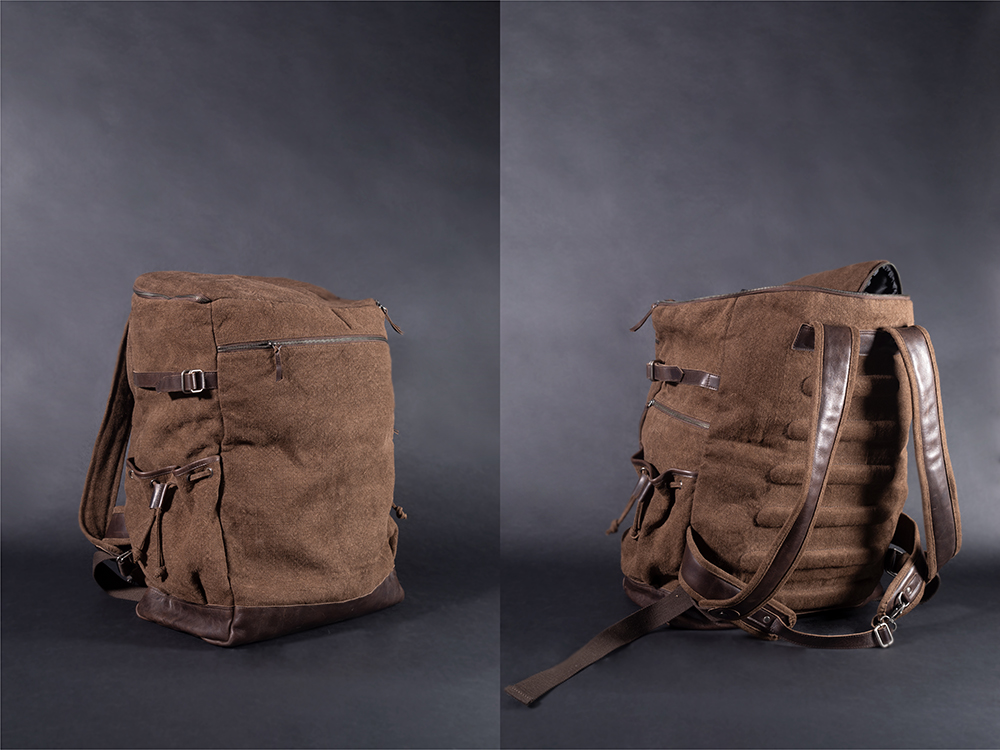
I designed a knapsack to carry this tent with me wherever I go. This knapsack is a sign that signifies the mobile nature of my sense of home. When worn on my back, it communicates to others that i’m a contemporary nomad.
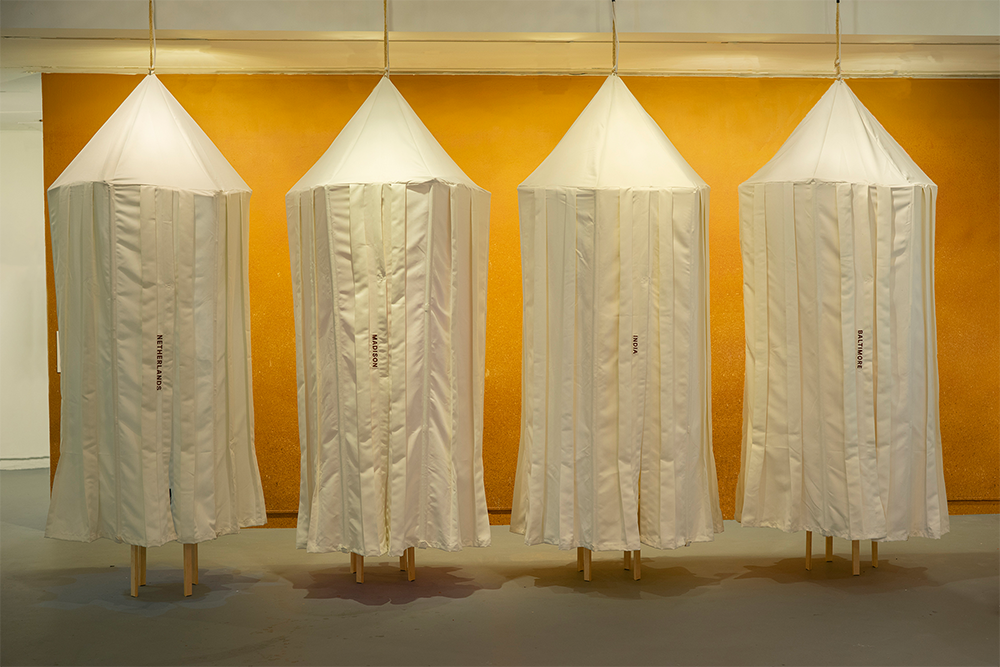
I have four tents that signify each of my homes. No home is better than any other. I delivered the same message to the audience by placing all the tents in a straight line, creating a non-hierarchical formation and making the access points indistinguishable. They all are of the same neutral color and shape; however, they are labeled, which makes the only difference.
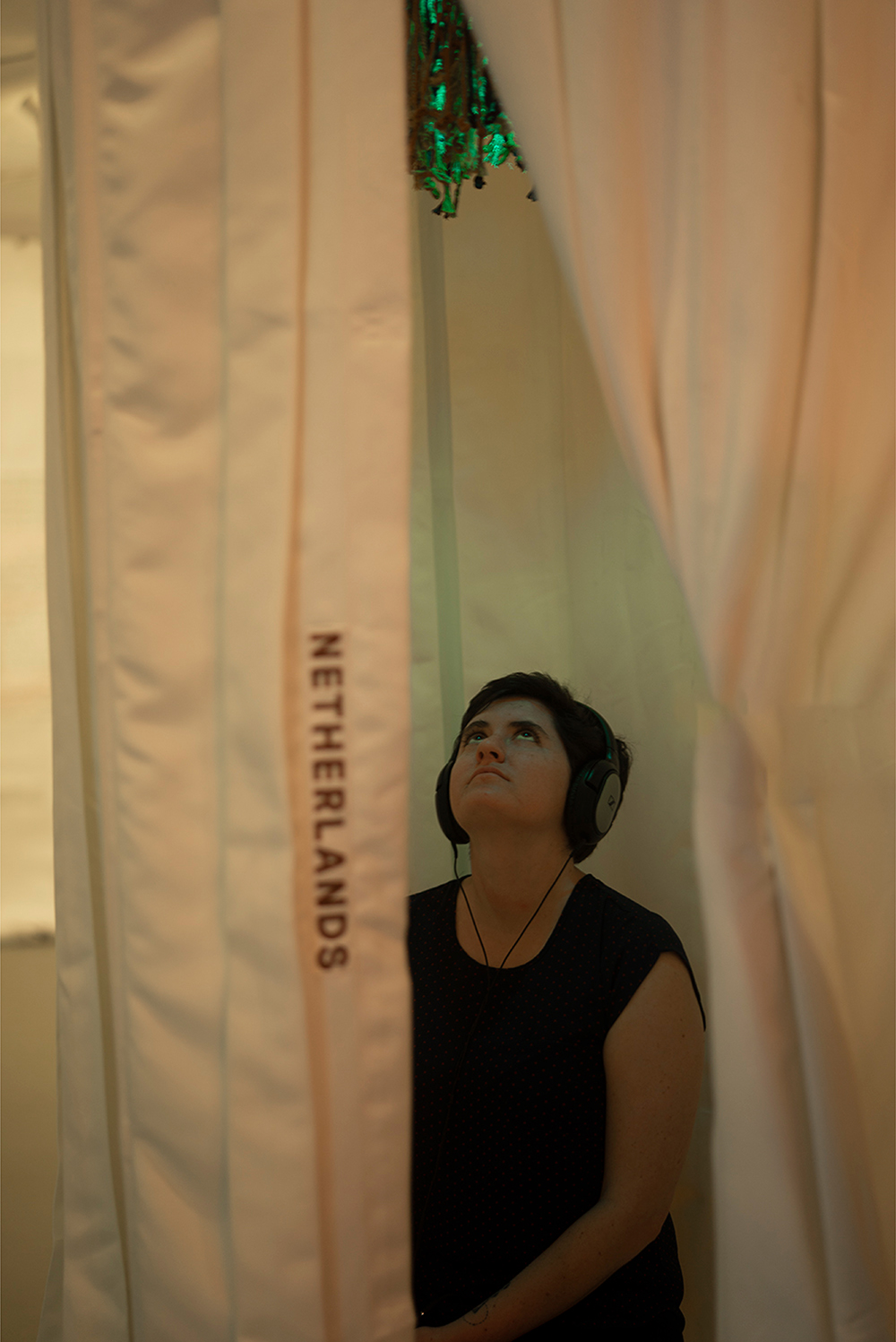
Each tent embodies a different personality on the inside, emulating the emotional climate of each experience. This is in stark contrast to the homogeneous exterior of the tents. The different colored bulbs create an apt environment that emulates the emotional climate of that experience. Here, I use color to affect how the audience feels inside the tent.
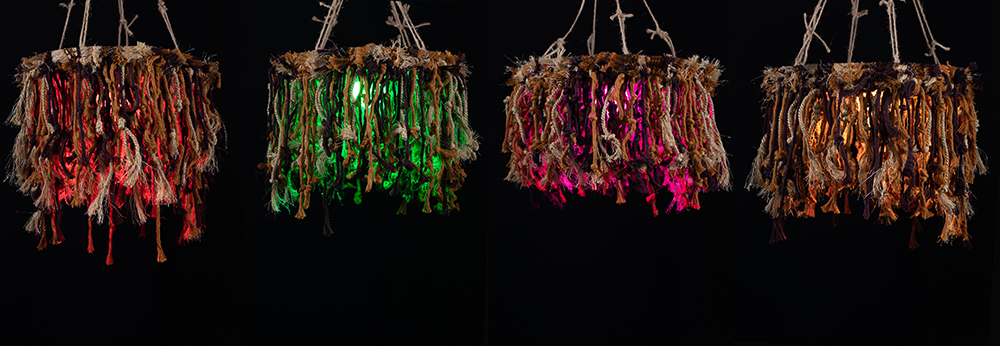
Quipus
The quipus placed inside the tents act as an object of intrigue. When one enters someone’s home for the first time, one looks around out of curiosity to build up a mental collage of the other person’s personality. The quipus allow another level of interaction and feed the interest of the audience. They emulate the emotional climate and portray the specific experience in an abstract form.
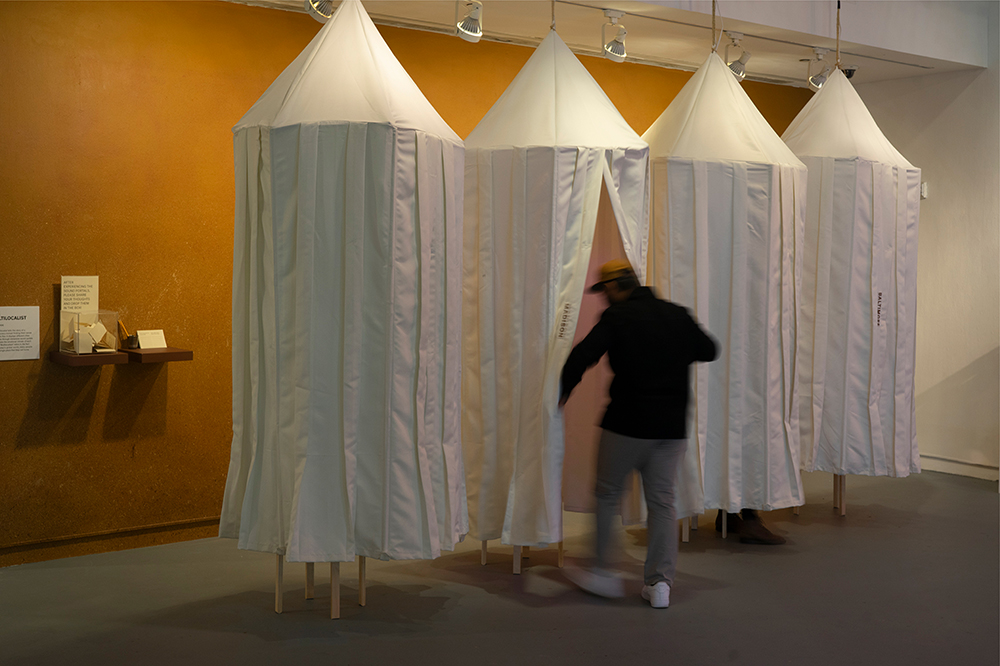
This project is about migration and finding a sense of home which is not specific to a time or place but is instead scattered among various experiences throughout the globe. In the process of my journey of finding home, I realized that home is within myself and I carry it wherever I go.
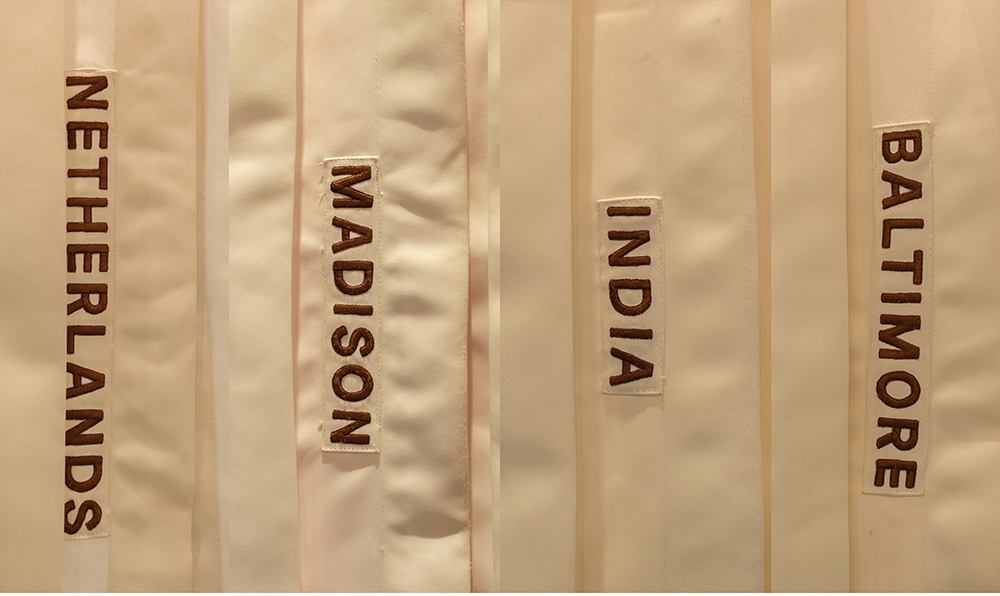
The labels signify the different experiences that communicate to the audience that there is variety and that they can make a choice. The pleats on the outer surface of the tent add a pleasant visual pattern. The hand-embroidered labels on the tents add a subtle layer of information while maintaining its tactile nature.
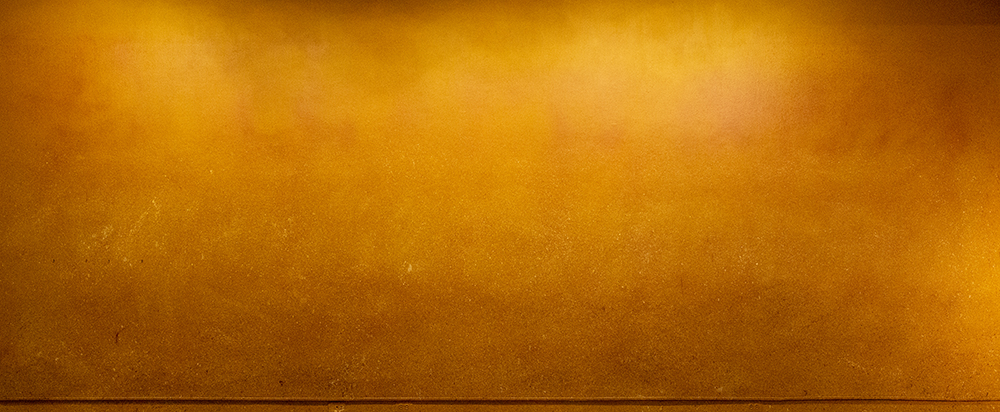
The background wall is painted in a desert clay color and then textured with layers of different colored speckles to add depth and gradient. The neutral color of the tents pop out against a dark background, maintaining the focus on the tents.
